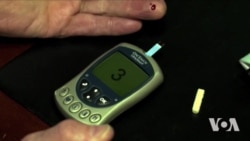Excess sugar, or glucose, in your blood is not good. But a healthy body regulates it through insulin, produced in the organ called the pancreas.
If the body fails to do that, either because of genetics or an unhealthy lifestyle, diabetics have to adopt a grueling routine of constant monitoring of blood sugar and injecting insulin for the rest of their lives.
Both insulin monitors and delivery devices, called insulin pumps, are available, but so far, creating an automatic injector that does not require monitoring has proved to be a difficult problem.
After working on it for almost 20 years, scientists at Harvard University say they may be close to solving it.
“In essence, we use a patient model, a computational model, a mathematical model, to forecast into the future," said Harvard's Frank Doyle, a professor of engineering and applied sciences. "So we get a sense of how past insulin affects future glucose, how the past trajectory of glucose is going to play out for the next hour or two.”
Scientists say automatic insulin pumps should be on the market within five years.
What about a cure?
Finding a cure for diabetes would be even better, and laboratory mice at the Massachusetts Institute of Technology may hold the key.
In the type of diabetes caused by genetic disposition, the human immune system kills pancreas cells that produce insulin. A gelatin-like substance engineered in an MIT lab shields those cells from the attack.
“We can take these human islets from stem cells and actually cure these diabetic mice for months," said Daniel Anderson, a professor of applied biology at MIT. "We have also shown that in primates we can put these little balls of new material in the abdominal space of primates and see that they don't form scar tissue, which is an important step towards thinking of using them in people.”
Scientists are optimistic that one way or another, or maybe with a combination of approaches, they will bring relief to diabetes sufferers within a few years.










